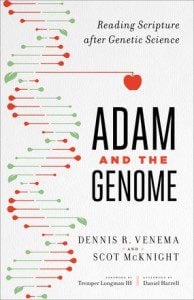 Ann Voskamp: “My Dad had said we’d never see anything like it again — not in our life times. 120 combines lined up around one field — 160 acres of soybeans. A harvest of less than 12 minutes. An attempt at a world record. All crop donated to world hunger. They were calling it a harvest for hunger.”
Ann Voskamp: “My Dad had said we’d never see anything like it again — not in our life times. 120 combines lined up around one field — 160 acres of soybeans. A harvest of less than 12 minutes. An attempt at a world record. All crop donated to world hunger. They were calling it a harvest for hunger.”
Allan Bevere has an important book on the Christian and the State, and Ted Gossard reviewed it thoroughly… here is the last post in the series with links to the rest in the sidebar.
Dear Karen, you are on our list! “I mean what is a woman like me supposed to do when she wakes up and learns she did not make it into the list of the Top 200 Most Influential Churchy Bloggers? Not that I stood a whore-at-a-revival chance of making that list, mind you. Only a few women did. Still, I write for an evangelical blog. You’d think I might have placed somewhere in the bottom 190s. But then slap-me-sideways, Ann Voskamp, who has more followers than Mitt Romney didn’t make the list either. Timothy Dalrymple takes a jab at explaining the convoluted analysis that went into compiling that list. And if all that wasn’t bad enough news, I learned that I was left off the list off ofChristianity Today’s 50 Women to Watch issue.” My list on Google Reader is about 20 and you are smack-dab right there in the middle of it!
Josh Graves: “Basic truth #2. Within his social and societal context, Jesus might not have been a total anarchist but he was certainly leaning forward toward the future, not backwards toward the past. He was thoroughly informed by the past (Genesis, Isaiah) but he had this vision of the city to come (Rev. 21 and 22). Say it plain. I don’t believe hierarchy will exist in the new heavens and the new earth. That’s why Jesus started to subvert the notion that someone is not as valid because of their gender. Jesus really believed it was the Spirit, not gender, that called people to roles and tasks in the expansion of the kingdom.”
 I like this cartoon on introverts: click on the image to your left (link to site).
I like this cartoon on introverts: click on the image to your left (link to site).
Derek is doing a series on the life of devotion.
Research universities in trouble: “They’re the pride and backbone of American higher education, doing essential research and educating en masse the next generations of scientists and engineers. But a new report argues the mission of the country’s 101 major public research universities is imperiled by budget cuts amounting to one-fifth of their state funding over the past decade.”
A new blog about the historical Jesus worth your bookmark.
Meanderings in the News
Are Neanderthals humans? “Schaafhausen pored over the fossils, observing their crests and knobs. He noticed that the bones had the overall shape you’d expect from a human skeleton. But some bones had strange features, too. The skullcap, for example, sported a heavy brow ridge, hanging over the eyes like a boney pair of goggles. It was, at once, human and not. The Neanderthal Man challenged Schaafhausen with a simple yet profound question: Was it a human, or did it belong to another species? It’s been over 150 years since the bones first emerged from the Neander Valley—a time during which we’ve learned a vast amount about human evolution. Today, scientists can even scan the genomes of Neanderthals who died 50,000 years ago. And yet the debate still rages. It’s a debate that extends beyond Neanderthals, forcing us to ask what it means to be a species at all.”
Good news for breast cancers, by Robin Roberts: “Scientists announced Sunday that they have finished mapping virtually all of the genetic mutations in breast cancer, an effort that could soon change the way patients are treated and eventually help researchers develop better treatments. “The catalogue of human breast cancers is nearly complete,” says study co-leader Matthew Ellis of the Washington University School of Medicine in St. Louis. “It’s the breast-cancer equivalent of putting a man or woman on the moon.” Among the most striking findings: One of the most lethal types of breast cancer is genetically closer to a kind of ovarian cancer than it is to other breast tumors, according to the paper, published online today in Nature. That discovery could soon produce real benefits for breast cancer patients, Ellis says. Women with so-called basal-like breast tumors — also known as triple-negative cancers — would likely do better on a much less toxic chemotherapy regimen, which is currently the standard of care in ovarian cancer. Such shifts show that doctors are beginning to change the way they look at cancers, focusing less on a tumor’s organ of origin and more on the inner workings of its nucleus, down to the molecular level, Ellis says.”
Missing children in India: “NEW DELHI — Every six minutes, a child goes missing in India. They are boys like Irfan, drugged and abducted at the age of 9 by two men on a motorbike as he walked home one day after playing with friends. “It was living hell these past two years, trying to figure out where we could find him,” said his father, Iqbal Ali. “I used to run a biscuit bakery, but from the day he disappeared, I got so caught up trying to meet politicians, police and people who claim to do magic to get children back, that I had to shut down my bakery. I had no time for it.” More than 90,000 children are officially reported missing every year, according to data compiled and released late last year by leading children’s rights group Bachpan Bachao Andolan, which showed the problem was far greater than previously thought. Up to 10 times that number are trafficked, according to the group — boys and girls, most from poor families, torn from their parents, sometimes in return for cash, and forced to beg or work in farms, factories and homes, or sold for sex and marriage. It is an epidemic that, until a few years ago, remained unreported and largely ignored by the authorities.”
Life spans and education: “For generations of Americans, it was a given that children would live longer than their parents. But there is now mounting evidence that this enduring trend has reversed itself for the country’s least-educated whites, an increasingly troubled group whose life expectancy has fallen by four years since 1990. Researchers have long documented that the most educated Americans were making the biggest gains in life expectancy, but now they say mortality data show that life spans for some of the least educated Americans are actually contracting….The reasons for the decline remain unclear, but researchers offered possible explanations, including a spike in prescription drug overdoses among young whites, higher rates of smoking among less educated white women, rising obesity, and a steady increase in the number of the least educated Americans who lack health insurance. The steepest declines were for white women without a high school diploma, who lost five years of life between 1990 and 2008, said S. Jay Olshansky, a public health professor at the University of Illinois at Chicago and the lead investigator on the study, published last month in Health Affairs. By 2008, life expectancy for black women without a high school diploma had surpassed that of white women of the same education level, the study found.”
Evangelical clothing demands affecting Brazilian fashion: “ITABORAI, Brazil (AP) – Strolling down the main shopping drag in this working-class Rio de Janeiro suburb, it’s not the second-skin dresses in shocking pink spandex that catch the eye or even the strapless tops with strategically placed peekaboo paneling. The newest look can instead be found in stores like Silca Evangelical Fashion, where the hot items are the demure, long-sleeved frocks with how-low-can-you-go hemlines and the polyester putty-colored potato sack dresses. In the birthplace of the “fio dental” or dental floss string bikini, so-called evangelical fashion has emerged as a growing segment of the country’s $52 billion-a-year textile industry, catering to the conservative sartorial needs of Brazil’s burgeoning numbers of born-again Pentecostals. Once so difficult to procure that evangelical women tended to make much of their own clothes themselves, the modest garb is now popping up all over Brazil.”
Talking about ourselves: “The Harvard researchers—Diana Tamir, a grad student in psychology, and Jason Mitchell, her adviser—performed functional MRI scans on 212 subjects while asking them about their own opinions and personality traits, and about other people’s. Neuroimaging of this sort can reveal which parts of the brain are being activated; in this case, the researchers found that the mesolimbic dopamine system—the seat of the brain’s reward mechanism—was more engaged by questions about the test subject’s own opinions and attitudes than by questions about the opinions and attitudes of other people. The system has long been known to respond to both primary rewards (food and sex) and secondary rewards (money), but this was the first time it’s been shown to light up in response to, as the researchers put it, “self-disclosure.” What the study really illustrated, then, was a paradox: when it comes to information, sharing is mostly about me. The researchers weren’t trying to answer the thornier question of why—why, as they wrote, our species might have “an intrinsic drive to disclose thoughts to others.” The paper nonetheless points to an intriguing possibility: that this drive might give us humans an adaptive advantage.”
The heave and ho of politics has reshaped news media so much news must be rigorously filtered: “In the six months from February to July 2012, the UCS searched for the terms “climate change” and “global warming” during primetime Fox News Channel programs, which consist of political commentary shows such as The O’Reilly Factorand Hannity. The UCS found that, in 37 of 40 instances, Fox News programs misled viewers about climate science—mainly, by broadly dismissing it. As an example, the UCS quotes an on-air statement from April 11, 2012: “I thought we were getting warmer. But in the ‘70s, it was, look out, we’re all going to freeze.” (The report didn’t reveal the name of the actual source.) Fox News hosts and guests also mocked and disparaged statements from scientists and drowned out genuine scientific assertions with cherry-picked data and false claims.”
Speaking of bias, Sean Carroll points out gender bias among scientists: “Nobody who is familiar with the literature on this will be surprised, but it’s good to accumulate new evidence and also to keep the issue in the public eye: academic scientists are, on average, biased against women. I know it’s fun to change the subject and talk about bell curves and intrinsic ability, but hopefully we can all agree that people with the same ability should be treated equally. And they are not. That’s the conclusion of a new study in PNAS by Corinne Moss-Racusin and collaborators at Yale. (Hat tipDan Vergano.) To test scientist’s reactions to men and women with precisely equal qualifications, the researchers did a randomized double-blind study in which academic scientists were given application materials from a student applying for a lab manager position. The substance of the applications were all identical, but sometimes a male name was attached, and sometimes a female name. Results: female applicants were rated lower than men on the measured scales of competence, hireability, and mentoring (whether the scientist would be willing to mentor this student). Both male and female scientists rated the female applicants lower.”
More and more urban, our world is — will it wreck the environment? “It’s easy to miss amid the day to day headlines of global economic implosion, Presidential campaign foibles and Mideast rage, but there is a less conspicuous kind of social upheaval underway that is fast altering both the face of the planet and the way that human beings live. That change is the rapid acceleration of urbanization, as more and more people in every corner of the world put down their farm tools and move from the countryside or the village to the city. In 2008, for the first time in human history, more than half the world’s population was living in towns and cities. And as a new paper published in the Proceedings of the National Academy of Sciences shows, the process of urbanization will only increase in the decades to come — with an enormous impact on biodiversity and potentially on climate change.As Karen Seto, a professor of the urban environment at Yale and the lead author of the PNAS paper, points out, that the wave of urbanization isn’t just about the migration of people into urban environments, but about the environments themselves becoming bigger to accommodate all those people. Today urban areas — ranging from Times Square to a small town in India — cover perhaps 3 to 5% of global land. But Seto and her co-authors calculate that between now and 2030, urban areas will expand by more than 463,000 sq. mi. (1.2 million sq. km). That’s equal to 20,000 U.S. football fields being paved over every day for the first few decades of this century. By then, a little less than 10% of the planet’s land cover could be urban. “There’s going to be a huge impact on biodiversity hotspots and on carbon emissions in those urban areas,” says Seto.”
David Brooks on the shift in conservatism: “In the polarized political conflict with liberalism, shrinking government has become the organizing conservative principle. Economic conservatives have the money and the institutions. They have taken control. Traditional conservatism has gone into eclipse. These days, speakers at Republican gatherings almost always use the language of market conservatism — getting government off our backs, enhancing economic freedom. Even Mitt Romney, who subscribes to a faith that knows a lot about social capital, relies exclusively on the language of market conservatism. It’s not so much that today’s Republican politicians reject traditional, one-nation conservatism. They don’t even know it exists. There are few people on the conservative side who’d be willing to raise taxes on the affluent to fund mobility programs for the working class. There are very few willing to use government to actively intervene in chaotic neighborhoods, even when 40 percent of American kids are born out of wedlock. There are very few Republicans who protest against a House Republican budget proposal that cuts domestic discretionary spending to absurdly low levels.”
Meanderings in Sports
James Hamblin: “PROBLEM: Thirty percent of penalty kicks in professional soccer are missed, as are 20-30 percent of NBA free throws, despite practice scenarios in which those numbers are notably lower. Studies have suggested that the reason is primarily psychological — they fail not from lack of focus, but “because attention is directed toward the execution of the action” — since most perform better at these rote but accuracy-dependent aspects of the game (which they’ve nearly perfected from a mechanical aspect with thousands of hours of practice) in low-pressure situations. So, like so many of us, they’re always looking for ways to get out of their heads. According to the researchers, freaking out is primarily associated with the left hemisphere of the brain, while the right hemisphere deals more with mechanical actions. Meanwhile the cortex of the right hemisphere controls movements of the left side of the body, and the left hemisphere controls the right side of the body. So they figured that if you can purposely activate the right hemisphere — in this case, by making a fist or squeezing a ball with your left hand — it will improve physical performance and draw focus away from the ruminating left hemisphere.”
From Grant to Matthew Desme.











